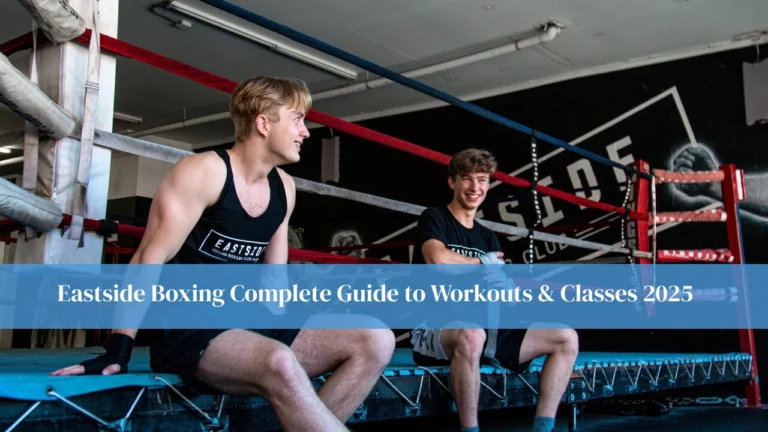In the realm of combat sports, boxing has long stood as a colossus, captivating audiences with its unique combination of strategy, strength, and spectacle. From smoky gyms to glittering arenas, it has carried an aura of discipline, rivalry, and artistry that few sports can match. Yet, in recent years, whispers and outright declarations have hinted at a decline. Is boxing a dying sport, or is this narrative a misinterpretation of its evolving landscape? The answer is far from simple, and to understand it, we must look at both the shadows and the light.
This exploration delves deep into the heart of the matter, examining boxing’s golden years, its present challenges, and the resilience that continues to keep it relevant. Along the way, it becomes clear that while the sport has changed sometimes dramatically its essence remains intact.
The Glory Days of Boxing
Boxing’s golden era is often remembered with a near-romantic sense of nostalgia, defined by iconic fighters and historic bouts that became cultural milestones. Legends such as Muhammad Ali, Mike Tyson, and Sugar Ray Leonard didn’t just dominate in the ring they transcended it. These athletes became symbols of resilience, charisma, and unyielding willpower. Their epic battles, like Ali versus Frazier or Tyson’s early knockouts, are etched into the annals of sports history.
In those days, boxing was more than a sport; it was a shared global event. Families gathered around televisions, and stadiums were filled with fans who understood they were witnessing history in the making. Promoters and broadcasters turned fights into spectacles, complete with storylines, rivalries, and national pride. The sport’s visibility was unmatched, and its cultural impact reached far beyond the ropes.
Is Boxing a Dying Sport?
Fast forward to today, and the landscape looks different. Boxing still commands attention during major events, but for many, it no longer holds the same universal spotlight. The rise of mixed martial arts (MMA), particularly through the explosive growth of the Ultimate Fighting Championship (UFC), has introduced a fierce competitor into the combat sports arena.
MMA offers a broader skill set combining striking, grappling, and submissions and appeals to a generation raised on fast-paced, unpredictable entertainment. This has siphoned off not only viewers but also potential fighters who might have once chosen boxing as their path.
Economically, boxing still generates massive revenue for marquee fights, with pay-per-view sales sometimes reaching into the hundreds of millions. Yet, the financial ecosystem has shifted. Sponsorship models, media rights, and fan engagement strategies that once guaranteed success no longer deliver the same results. The sport is navigating a more fragmented and competitive entertainment market.
Why the Perception of Decline Exists
Several intertwined factors have shaped the narrative that boxing is in decline. One of the most significant is its struggle to adapt fully to the demands of the digital age. While many sports have embraced live streaming, interactive content, and social-first marketing, boxing has often clung to traditional models, particularly pay-per-view, that limit accessibility for new fans.
Another factor lies in the sport’s talent pipeline. Critics argue there’s a shortage of magnetic personalities and long-standing rivalries that once kept fans hooked for years. While skilled fighters exist, the absence of universally recognized superstars has reduced casual engagement. In an era where sports entertainment competes directly with gaming, streaming platforms, and social media, capturing attention is more challenging than ever.
Accessibility also plays a key role. When fights are locked behind expensive broadcasts, potential fans, especially younger audiences, may never develop the habit of watching. Without free-to-air fights or easy streaming options, the barrier to entry remains high, shrinking the sport’s mainstream reach.
The Resilience of Boxing
Yet, to declare boxing on its deathbed would be both premature and inaccurate. For all its challenges, the sport has shown remarkable adaptability in certain areas, proving that it still holds a unique and valuable place in global sports culture.
One major strength is its loyal fan base. Boxing has cultivated a dedicated community that continues to show up for both established champions and rising talents. In cities like Las Vegas, London, Manila, and Mexico City, boxing nights remain electric affairs.
In addition, boxing is experiencing growth in emerging markets. Countries across Africa, Asia, and Eastern Europe are producing champions who inspire local pride and international attention. This global expansion not only revitalizes the sport but also creates opportunities for fresh narratives and cultural diversity.
Technological innovation is another avenue keeping boxing alive. Streaming services have made it possible for fights to reach audiences far beyond traditional broadcast territories. Virtual reality experiences give fans a ringside view without leaving their homes. Wearable tech and performance analytics are helping fighters train smarter, not just harder.
The Role of Technology in Boxing’s Future
Technology’s influence on boxing is becoming increasingly significant. Virtual reality can transport fans into the heart of the action, offering immersive ringside perspectives. Streaming platforms like DAZN have revolutionized access, bypassing traditional pay-per-view restrictions and opening fights to a global audience.
Social media has arguably had the most profound impact. Fighters now have direct channels to build their brands, share personal journeys, and interact with fans. This transparency not only humanizes athletes but also creates loyalty that extends beyond individual bouts.
Behind-the-scenes content, real-time updates, and fan Q&As are reshaping the sport’s marketing approach. An athlete’s story their training regimen, setbacks, and triumphs can be just as compelling as the fight itself. And with the global reach of platforms like Instagram, TikTok, and YouTube, even lesser-known fighters can cultivate international followings.
Challenges Boxing Must Overcome
For boxing to thrive in the long run, it must address several pressing challenges. Competition for viewership is fierce, not only from MMA but also from non-sports entertainment. To keep audiences engaged, boxing must deliver consistent, high-quality matchups, not just occasional superfights.
Attracting new participants is equally vital. This means making the sport accessible and appealing to young athletes through school programs, affordable gyms, and community initiatives. Addressing safety concerns transparently is also key, as public awareness of head injuries has grown substantially.
From a promotional standpoint, the sport must evolve beyond traditional marketing. Embracing digital-first campaigns, influencer collaborations, and global streaming deals can help recapture mainstream relevance.
Conclusion
So, is boxing a dying sport? The evidence suggests otherwise. While it undeniably faces serious challenges from changing media habits to fierce competition its legacy, cultural weight, and capacity for reinvention remain strong. With the right strategies, boxing could very well experience a resurgence, fueled by new stars, technological innovation, and a more accessible approach to fan engagement.
Far from fading away, boxing is simply evolving. Its story isn’t one of decline, but of adaptation. Just as fighters adjust mid-bout to seize victory, the sport itself has the tools and opportunities to reclaim its place as a premier spectacle in the global sports arena.
FAQs
What caused boxing’s decline in popularity?
Boxing’s perceived decline can be attributed to factors such as the rise of MMA, changes in media consumption habits, and challenges in marketing and accessibility.
Can boxing make a comeback?
Yes, boxing can make a comeback by leveraging new technologies, engaging with fans through digital platforms, and nurturing a new generation of talent.
How has MMA affected boxing?
MMA, particularly the UFC, has offered an alternative combat sport that appeals to many fans, drawing attention and athletes away from boxing.




